ESTRO 2024 Congress Report
Two recent multicentre prospective trials, the Italian POst-Prostatectomy Ablative Radiation Therapy trial (POPART) and the Spanish hypofractionated post-operative prostate bed radiotherapy (HYPORT) trial have shed light on the efficacy and safety of salvage ultra-hypofractionated stereotactic body radiotherapy (SBRT) and hypofractionated postoperative radiotherapy, respectively.
The POPART trial, identified by ClinicalTrials.gov identifier NCT04831970, aimed to assess the outcomes of postoperative salvage SBRT in prostate cancer patients.
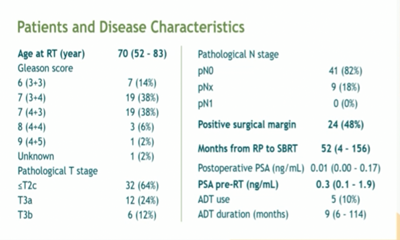
fifty patients with prostate-specific antigen (PSA) levels that ranged from ≥0.1 to 2.0ng/ml post-radical prostatectomy received Linac-based SBRT to the prostate bed in five fractions every other day, receiving a total dose of 32.5Gy. Toxicity assessment, measured by common terminology criteria for adverse events (CTCAE) v5.0, revealed that three months after treatment no > Grade 2 gastrointestinal (GI) or genitourinary (GU) toxicity occurred, and 3 cases of Grade 2 GI toxicity were observed. Additionally, patients retained a median quality of life (QoL). Six patients experienced biochemical failure.

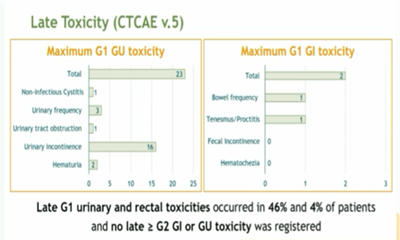
Conversely, the Spanish HYPORT trial, identified by ClinicalTrials.gov identifier NCT04484038, investigated hypofractionated postoperative radiotherapy in prostate cancer patients. Results from 407 patients across 25 Spanish centres showed favourable outcomes.
Grade 2 acute GU and GI toxicity occurred in 7% and 1% of patients, respectively, with Grade 3 acute GU toxicity observed in 1%.
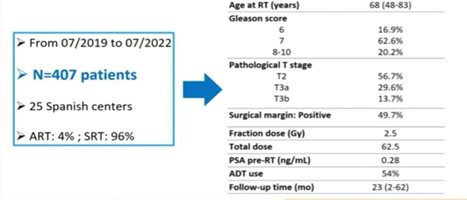
Late toxicity rates were slightly higher, with 10% experiencing Grade 2 GU toxicity and 1.2% Grade 2 GI toxicity. However, Grade 3 late GU and GI toxicity rates were low, at 1.7% and 0.8%, respectively.
Notably, the two-year biochemical relapse-free survival was 92%, and most patients retained their QoL or it improved.
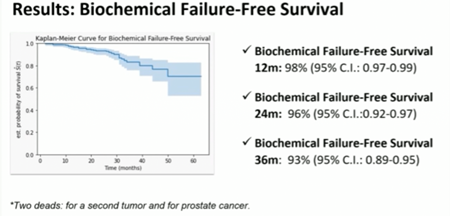
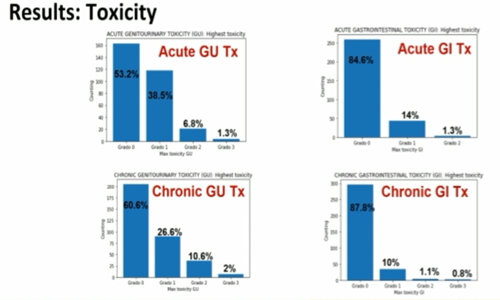
In conclusion, both salvage SBRT and hypofractionated postoperative radiotherapy were found to be safe and effective in the treatment of prostate cancer, with low rates of toxicity. Salvage SBRT showed no late toxicity > Grade 2, while hypofractionated postoperative radiotherapy achieved low rates of toxicity and excellent biochemical control. Longer follow-up is necessary to confirm chronic toxicity, QoL, and oncological outcomes for both approaches.
References:
- Proffered paper Presented by Couñago F: Phase Il trial of hypofractionated postoperative radiotherapy in prostate cancer: NCT04484038. Radiother and Oncol. Supplement 1, May 2024
- Proffered paper Presented by Ferrario F: POPART Trial (NCT04831970): Side Effects and QoL in a Post-Prostatectomy Ablative Radiation Therapy. Radiother and Oncol. Supplement 1, May 2024

Prof Stefano Arcangeli
Head of radiation oncology
Fondazione IRCCS San Gerardo dei Tintori, Monza
Associate professor of radiation oncology
University of Milan Bicocca

Prof Alfonso Gomez Iturriaga
University Hospital Cruces
Biocruces Health Research Institute
Basque Country University (UPV / EHU)
Spain